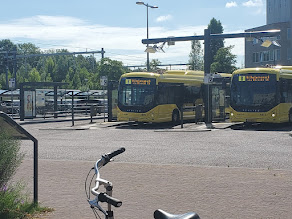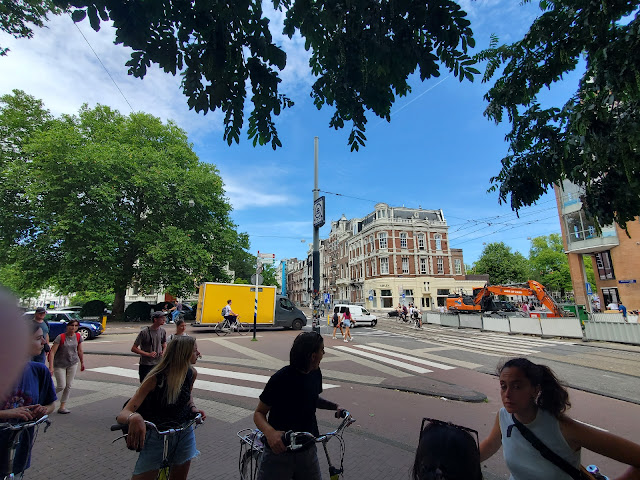We Need All Modes and More Choices
In two of the most recent posts, I talked about the types of people I saw biking as well as how land use changed as a result of building more biking infrastructure. For this post, I will briefly conclude my observations by discussing how I learned to put biking in a proper context as I feel we should with any debate about sustainable transportation systems: they must be truly multimodal for context and place, to be effectively sustainable.
Without a doubt, a major lesson for me in these past four weeks is how multiple transport modes support and complement each other's utility. Walking and biking can help us go places within that sweet spot of four to six miles, which includes arriving at a bus or train station for when the journey is intercity or further out in a different region. As a result, the components for supporting those systems must be present: pathways, safe infrastructure, parking, and most importantly, destinations. The last bit is perhaps the most overlooked I feel the more I explore sustainable transportation issues. Our restriction in the United States is that everything has been built far from each other (catering to the car-dominated system) and separated, which further centralizes destinations that may or may not meet people's needs.
There were many places I visited where I could find a grocery store bordered by retail shops bordered by restaurants and take-out eateries that were close to banks, pharmacies, doctor's offices, and open, public spaces. Forget higher density residential areas; we in the U.S. need areas with a higher density of destinations that meet multiple needs. For that, there need to be greater choices in both what is located in a place as well as in the choices of how one travels there. It does not matter if the destination can be accessed by car, bike, foot, train to foot, or bus to foot. We can certainly design the land to discourage the ease of driving to discourage car use or think about prioritizing the safety and comfort of pedestrians and bicyclists in order to encourage those human-powered transport modes. Sustainable transport, nevertheless, is going to require acknowledging and acting on more than the transportation system. That effort must go in tandem with the decentralization of our destinations so that there is a higher density of choices per square block or neighborhood or city district. Once we offer more destination choices, we must strive to offer modal choices. What I have learned on this trip is that as a starting point, just by offering a safe and convenient choice in how to travel, more people than one may believe will choose nonautomotive modes: that is a start.
 |
| Buses can provide shorter or longer trips |
 |
| Trains can provide short, moderate, or lengthy trips |
 |
| Active transport is a competitive option when given the safety and network to make these modes convenient |
 |
| At times and for some people, the car is still the most effective mode; this means making cars more environmentally friendly is a worthy goal |
 |
| Worst case scenario, if sea levels rise and create some canals in our cities, we will need sustainable water transport too! |



Comments
Post a Comment